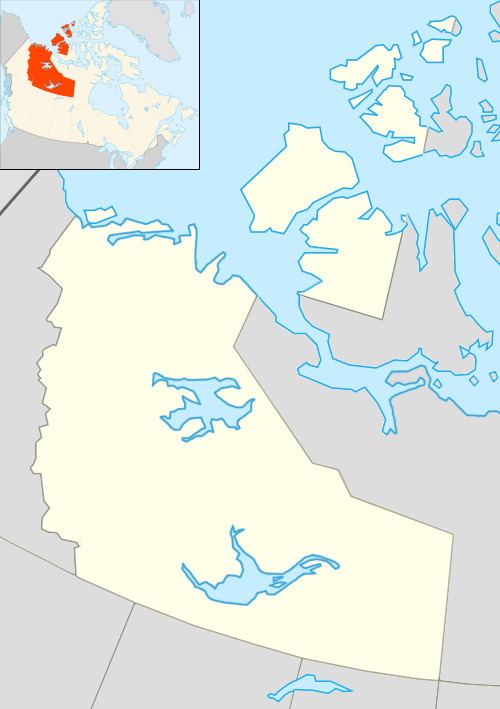Native to Canada Ethnicity Dogrib people Writing system Latin | Region Northwest Territories Native speakers 2,100 (2011 census) | |
 | ||
Language family Dené–Yeniseian?
Na-Dené
Athabaskan
Northern Athabaskan
Dogrib | ||
The Dogrib language, or Tlinchon (/ˈtlɪntʃɒn/; Tłı̨chǫ Yatıì [tɬí̃tʃʰṍ játʰîː]), is a Northern Athabaskan language spoken by the Tłı̨chǫ (Digrib people) of the Canadian Northwest Territories. According to Statistics Canada in 2006, there were 2,640 people who spoke Tlinchon.
Contents
The Tlinchon region covers the northern shore of Great Slave Lake, reaching almost up to Great Bear Lake. Rae-Edzo, now known by its Tlinchon name, Behchokǫ̀, is the largest community in the Tlinchon region. According to the Endangered Languages Project, approximately 1,350 people speak the language while at home. Speakers are commonly fluent in English.
Consonants
The consonants of Tlinchon in the standard orthography are listed below (with IPA notation in brackets):
Tenuis stops may be lightly voiced. Aspirated stops may be fricated [Cˣʰ] before back vowels.
Vowels
The language uses long, short and nasal vowels, and distinguishes them in writing, along with low tone:
Grammar
Typologically, Tlinchon is an agglutinating, polysynthetic head-marking language, but many of its affixes combine into contractions more like fusional languages. The canonical word order of Tlinchon is SOV. Tlinchon words are modified primarily by prefixes, which is unusual for an SOV language (suffixes are expected).
Like Spanish and Portuguese, Tlinchon has two verbs similar to English 'be'. One is used for ways of being that are more dynamic or temporary; the other for more permanent and immutable properties. For example, nàzèe-dǫǫ̀ ts’įįlį and nàzèe-dǫǫ̀ ats’įįt’e both mean 'we are hunters', but the first means that the speakers are currently hunters (for example, part of a hunting party), while the second implies that hunting is their regular profession.
In addition to verbs and nouns, there are pronouns, clitics of various functions, demonstratives, numerals, postpositions, adverbs, and conjunctions in Tlinchon. The class of adjectives is very small, probably around two dozen words: most descriptive words are verbs rather than adjectives.
Examples
Example words and phrases:
